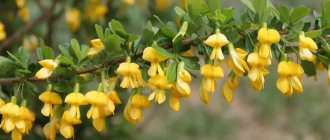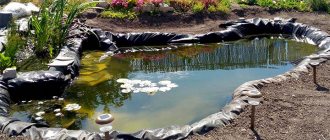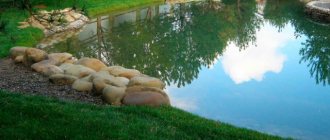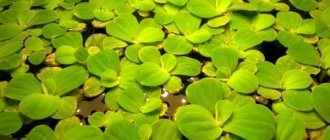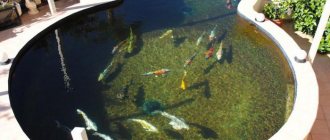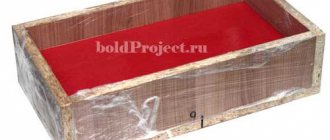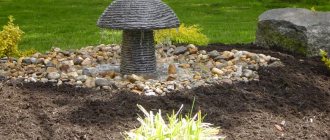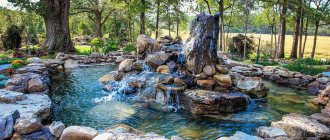The surface of the water calms, gives freshness and pleases the eye. Therefore, many are trying to arrange a real pond on the site, which will have its own ecosystem. Before you set up a pond on your property, you need to know whether a permit is required, decide on its size and shape, choose a suitable location and understand which pond you prefer: a trench or a ready-made container.
Definition of the word "pond"
According to the wording of the dictionaries, a pond is a body of water in an artificial or natural depression with a small water surface area, created for a specific purpose and purpose. It is used for breeding fish and waterfowl, irrigation, recreational activities, or for some aesthetic reasons. It is worth noting that this definition of a pond also includes a dammed place in the river, usually abundant with fish.
If in the original plan ponds were built near populated areas only due to the lack of natural reservoirs, then later they were created regardless of this. Today, artificial ponds are increasingly a tribute to fashion and are located on private property and summer cottages.
Features of lake formation
Lakes are always located in recesses of land that are created by nature. It should be noted that the territory does not have a one-way slope, and the formation of basins can be different.
So, the origin of the basin may be as follows:
- Tectonic.
- Glacial.
- Failed.
- Volcanic.
- Aeolian (wind influence).
Where do lakes most often form?
- Oxbow rivers.
- Rubble.
- Near the seas.
Natural processes and natural factors can independently determine the origin of a lake, so a person should not take special actions. Moreover, lakes can be connected to a river and have a very slow flow, or have an independent character with evaporation of water.
Water can be mineral or fresh, and in the first case a high salt content is assumed.
Only nature determines what the created lake should be like.
This is interesting: What is called a desert in geography? Definition, examples and types
Distinctive features
To better understand what a pond is, it is worth getting acquainted with its characteristics, which have its own distinctive features:
- The average water surface area of a pond is no more than 1 km².
- The erosion-resistant bottom bed has a gentle slope, while the banks are allowed to be relatively steep.
- If the pond does not have ground recharge, then in winter it may freeze completely, and in the hot season it may dry out.
- At the pond, the water level is allowed to fluctuate greatly depending on the prevailing weather (the level decreases during persistently hot weather, and the level increases after a lot of rain).
- The entire water area of the pond has the same water composition, the same vegetation and fauna.
A little history
The very first artificial ponds began to be created in the ancient civilizations of the Middle East. As a rule, they had a simple rectangular shape and were not distinguished by their sophisticated design. Only later could any diversity be noticed in the forms. In the culture of Ancient Rome, such ponds were already noted that implied a certain division, most often for bathing and for decorative purposes.
Presumably, the first garden pond appeared in Ancient Egypt, and its purpose was practical. Such a reservoir was used for breeding waterfowl or growing plant food. During the times of intense piety among the Egyptians, the luxurious temple gardens began to be marked with special decorative ponds, such that they were valued as works of art.
Types of Ponds
An artificially created pond requires careful selection of the location and consideration of natural conditions. Based on this, there are several main types:
- Ponds replenished with water through precipitation. They are erected in wide, sloping hollows, at which a relatively small dam is built. It allows you to accumulate a fairly large volume of water. The average depth of such ponds is 1.5 meters.
- Ponds that exist thanks to active natural springs. Regardless of the season of the year, they constantly receive the same volume of water. At the same time, the average temperature of water from the source does not change even in summer and does not rise above 11-12 °C.
- Ponds supplied with water from rivers. Due to certain conditions, they are built on floodplains or riverbeds. The latter are erected by blocking the river with earthen dams in one of the narrow parts of the floodplain. The design of the structure is such that water flows into the pond independently, through a channel from the backwater.
- Kopani. They are pits up to 1.5 m deep. They do not have a natural source and are fed by meltwater through rain, as well as through a pumping unit of the local water supply or from another body of water. These are the kind of ponds that are most often created in the areas of city parks, public gardens and private garden plots.
In addition to the standard division, ponds can have different purposes: decorative, recreational, technical or for economic purposes.
Last news
Dispute in corporate law. Part 7
7. Ensuring efficiency in the implementation of legal norms. It is generally accepted that enabling norms established by the state are implemented by people more willingly than obligatory and prohibitive norms. This is due to the fact that the degree of volition in this case is higher. The norms of corporate law, especially this provision concerns the norms regulating the internal life of corporations, to a greater extent than “centralized” ones, express the will of the collective. People carry out their own decisions and act more energetically, the wider their opportunity to pr…Read more »
Licensing regime for business activities
Regulation of business by the state is largely ensured by the presence of a licensing regime for entrepreneurial activity, which, in essence, is a set of methods and means of legal regulation of certain (subject to licensing) types of activities. Licensing is carried out in the manner prescribed by Federal Law of August 8, 2001 No. 128 FZ “On licensing of certain types of activities”, as well as other regulations. For example, it is licensed...Read more »
Best articles: Deep sea fish: characteristics, examples and photos
The concept of a security. Part 5
The exercise of rights under bearer issue-grade securities is carried out upon presentation by their owner or his authorized representative.
In the case of storage of certificates of documentary securities in depositories, the rights secured by the securities are exercised on the basis of certificates presented by these depositories on instructions provided by depository agreements of the owners, with a list of these owners attached. In this case, the issuer ensures the implementation of the rights under bearer securities of the person specified ...Read more »
Concept and characteristics of a corporation. Part 6
And finally, the fifth feature that distinguishes corporations from other entities is that any corporation is created to carry out any socially useful activity.
It must be recognized that there is neither a direct and clear legislative definition of the concept of “socially useful activity”, nor a list of types of activities classified as such.
At the same time, in the norms of Russian legislation, certain types of activities are characterized as “representing a danger to the individual, society or the state...Read more »
Responsibility for violation of corporate standards. Part 13
Indeed, according to paragraph 2 of Art. 44 of the Arbitration Procedural Code of the Russian Federation (APC RF), plaintiffs are organizations and citizens who filed a claim in defense of their rights and legitimate interests. If participants in corporations can bring such a claim, it is only in the interests of the corporation, so the plaintiff in any case must be the corporation itself.
In addition, the possibilities for filing such a claim by corporate participants are significantly narrowed because in order to bring such a claim against members of the board of directors or collegiate executive…Read more »
The concept of labor discipline. Disciplinary responsibility. Part 2
As for disciplinary liability, we emphasize that it has to be applied to employees who culpably fail to perform or perform their job duties in bad faith, i.e., for disciplinary offenses. As T.V. Kashanina1 rightly points out, the volume of corporate lawmaking in this case is much lower.
In general, for violation of labor duties in accordance with the provisions of labor legislation, the corporation administration may impose the following disciplinary sanctions (Article 192 of the Labor Code of the Russian Federation): reprimand; rebuke; at…Read more »
Dispute in corporate law. Part 6
For modeling such fast-flowing processes, such as entrepreneurial activity, in particular, government regulation is not always suitable. The legislator can indicate only general guidelines, giving participants in civil circulation the opportunity to determine the type of activity, the conditions for its implementation, set the price in the process of realizing its results, etc. The state should regulate only some aspects of such activities: taxes, environmental requirements, regulations regarding labor protection, min...Read more »
Pond or lake?
Most lakes and ponds, at first glance, are very similar and hardly differ from each other. These reservoirs can be with stagnant water or with slow water exchange, of different depths and sizes, as well as the degree of population of flora and fauna. Nevertheless, they still have differences.
The first and main thing that will distinguish any water resources is the nature of their origin: whether the object is the result of human activity or is it the result of relief-forming processes that give birth to natural bodies of water, such as seas and lakes. Ponds, which, by the way, are not always inferior in area to the latter, are of artificial origin, and their life activity is completely controlled by humans.
In addition, there are differences in the following:
- Contains water. Near lakes it can be fresh, salty and mixed; near ponds it is always fresh.
- During. Unlike a lake, a pond has no current.
- In microorganisms. Plankton and nekton live only in lakes.
It is interesting to note that it is generally accepted to call lakes bodies of water that are not connected to the sea or ocean and are closed in their shores.
Plants
The basis of any water body is plants. Near the pond they are divided into the following groups: floating on the surface, submerged, growing at depth and on the shore. They are producers in the trophic chain. These include green and blue-green and other unicellular algae. These and other types of plants are producers of primary nutrition for the entire living ecosystem - carbohydrates and oxygen, synthesizing them from carbon dioxide and water under the influence of solar energy.
The amount of light entering and penetrating into the depths of the reservoir and the seasonal turnover of water are such that the finer they are, the greater the amount of green mass that can be produced. It is this feature, left without proper attention, that transforms a pond into a swamp.
